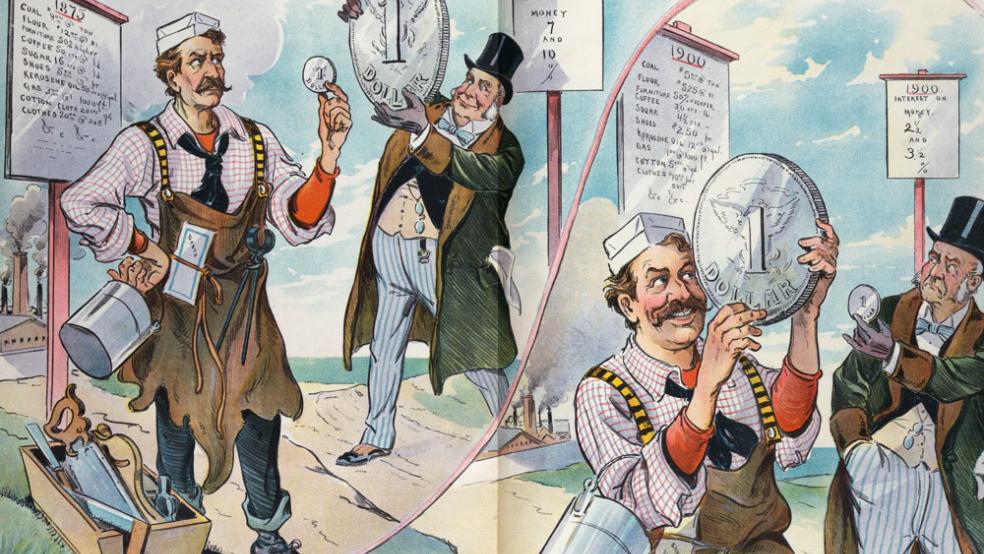The recent shake-up at the research department of the Federal Reserve Bank of Minneapolis has rekindled a discussion about the best macroeconomic model to use as a guide for policymakers. Should we use modern New Keynesian models that performed so poorly prior to and during the Great Recession? Should we return to a modernized version of the IS-LM model that was built to explain the Great Depression and answer the questions we are confronting today? Or do we need a brand new class of models altogether?
To answer this, it’s important to remember that models are built to answer specific questions. We don’t have one grand model that can explain everything, so the model that is used depends upon the issue being examined. Think of, for example, a different type of model of the world, a map.
Related: 7 Myths about Keynesian Economics
The best map to use to drive from Seattle to Los Angeles is a lot different from the best map to find out if it is safe to dig a deep hole in someone’s yard. One would highlight the major freeways and roads between Seattle and Los Angeles, the other would highlight underground pipes, electrical wires, etc. A single map highlighting both would be more confusing to use due to the clutter of information.
And if we try to stuff even more information onto the map so that it can answer all of our questions, telephone poles, roads, elevation, every side road, every house and every store, all the bus routes, rainfall, the types of vegetation, etc. etc. the map becomes too complicated to be useful. Economic models are no different. The trick in modeling is to pare away all the inessential features so that there can be a sharp focus on the question of interest. The best maps are very specialized and highlight only what we need to know. The best economic models do the same.
I don’t think anyone disagrees that one grand model attempting to capture every feature in the economy would be too complicated and unwieldy to be of use, and that models need to be adjusted depending upon the questions we are interested in. The debate is about which class of models we should use as the foundation for the various extensions needed to answer specific questions. One class is the IS-LM model that is still featured in textbooks, and that Paul Krugman highlights on his blog. Another class is the more modern New Keynesian models.
Where I disagree with many of my colleagues is in the assertion that we should limit ourselves to a single class of models, e.g. variations on the New Keynesian model. Going back to the map example, is one class of maps – globes – the best type of map for all purposes? Of course not, and I don’t think economic models are any different. There is no single class of macroeconomic models that is best for all questions, at least not yet.
Related: What’s Wrong with Harvard’s Professors?
The New Keynesian model was built to explain a world of moderate fluctuations in GDP. It features temporary price rigidities, and the macroeconomic aggregates in the model are consistent with the optimizing behavior of individual consumers and producers. For certain types of questions – how should policymakers behave to stabilize an economy with mild fluctuations induced by price rigidities – it is the best model to use. Hence it’s popularity during the “Great Moderation” from 1984-2007 when there were no large shocks to the economy.
When a different world emerged, a large financial shock and the ensuing Great Recession, the model was of little use in guiding policymakers or explaining what had happened. Though some work existed on this topic when the crisis hit, it was not fully developed and it was outside the mainstream research effort. Researchers have been scrambling ever since the start of the recession to add a financial sector and financial frictions to the New Keynesian model and give it more relevance during financial crises, but there is still work to do before we’ll know if this effort is successful.
The IS-LM model, on the other hand, was built in the aftermath of the Great Depression to examine precisely the kinds of questions we faced throughout the Great Recession, issues such as a liquidity trap, the paradox of thrift, and how policymakers should react in such an environment. Why is it surprising that a model built to explain a particular set of questions does better than a model built to explain other things? Especially when the model is used in a way that incorporates the lessons we’ve learned in the intervening decades about its shortcomings.
Perhaps the New Keynesian model will dominate as a guidepost for policymakers in the future during times of both moderate and severe fluctuations now that it’s problems are being addressed. But during the Great Recession when it was needed the most it simply was not the best model to answer important questions, and we shouldn’t criticize people for using other types of models – the IS-LM model in particular – to give them insight.
Top Reads from The Fiscal Times:
- Why Your Tax Returns Aren't Safe with the IRS
- Why Kerry’s Iran Deal Will Hold Up
- How Secret Global Trade Talks Can Destroy the Internet






